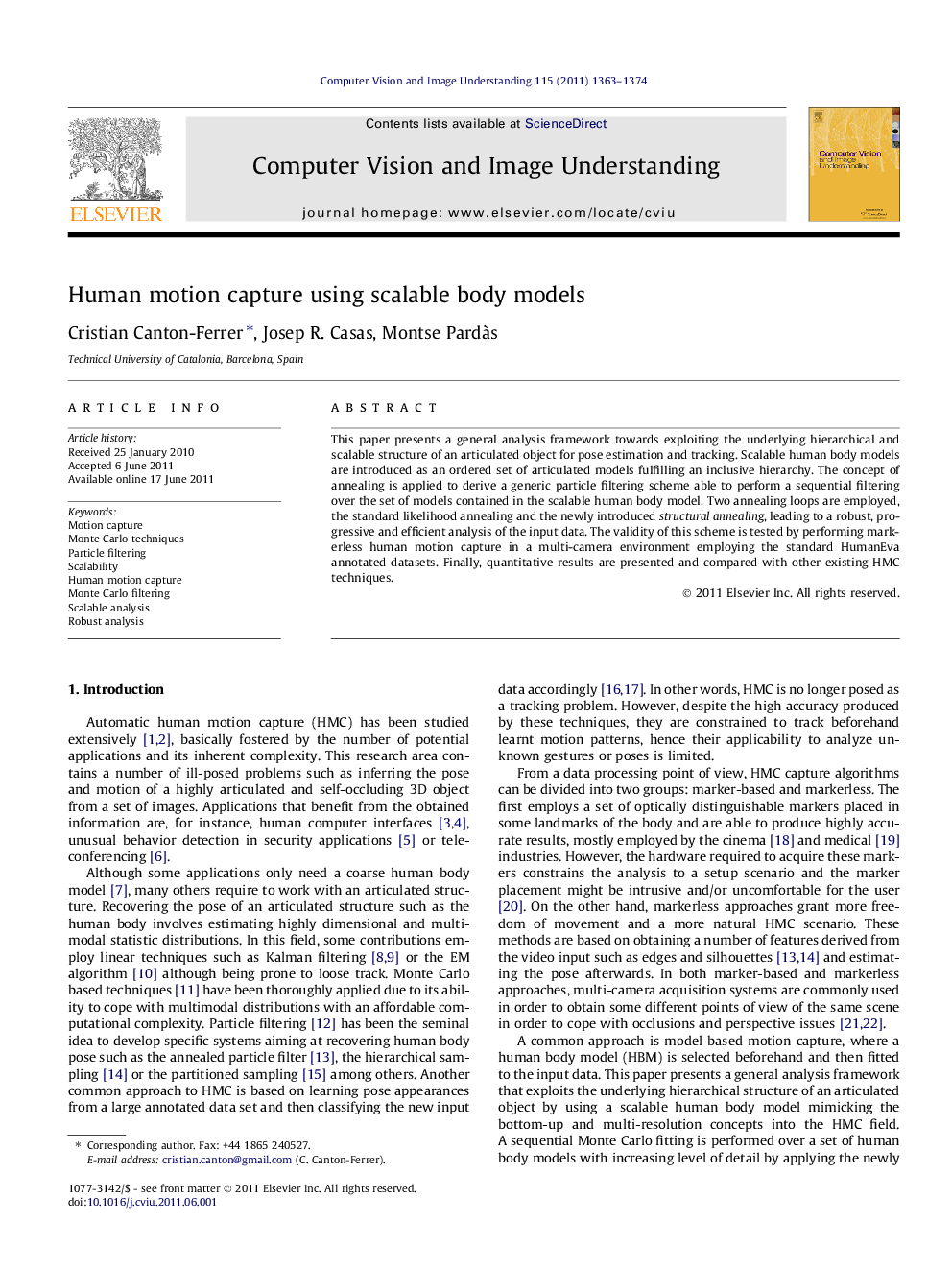| Article ID | Journal | Published Year | Pages | File Type |
|---|---|---|---|---|
| 526109 | Computer Vision and Image Understanding | 2011 | 12 Pages |
This paper presents a general analysis framework towards exploiting the underlying hierarchical and scalable structure of an articulated object for pose estimation and tracking. Scalable human body models are introduced as an ordered set of articulated models fulfilling an inclusive hierarchy. The concept of annealing is applied to derive a generic particle filtering scheme able to perform a sequential filtering over the set of models contained in the scalable human body model. Two annealing loops are employed, the standard likelihood annealing and the newly introduced structural annealing, leading to a robust, progressive and efficient analysis of the input data. The validity of this scheme is tested by performing markerless human motion capture in a multi-camera environment employing the standard HumanEva annotated datasets. Finally, quantitative results are presented and compared with other existing HMC techniques.
► A scalable human body model can better explain noisy data. ► The HS-APF algorithm can efficiently explore a high dimensional state space. ► Combination of structural and likelihood annealing yield to accurate estimations. ► Adaptive resampling can efficiently combine state spaces of different dimensions. ► Markerless motion capture can be addressed using HS-APF.
